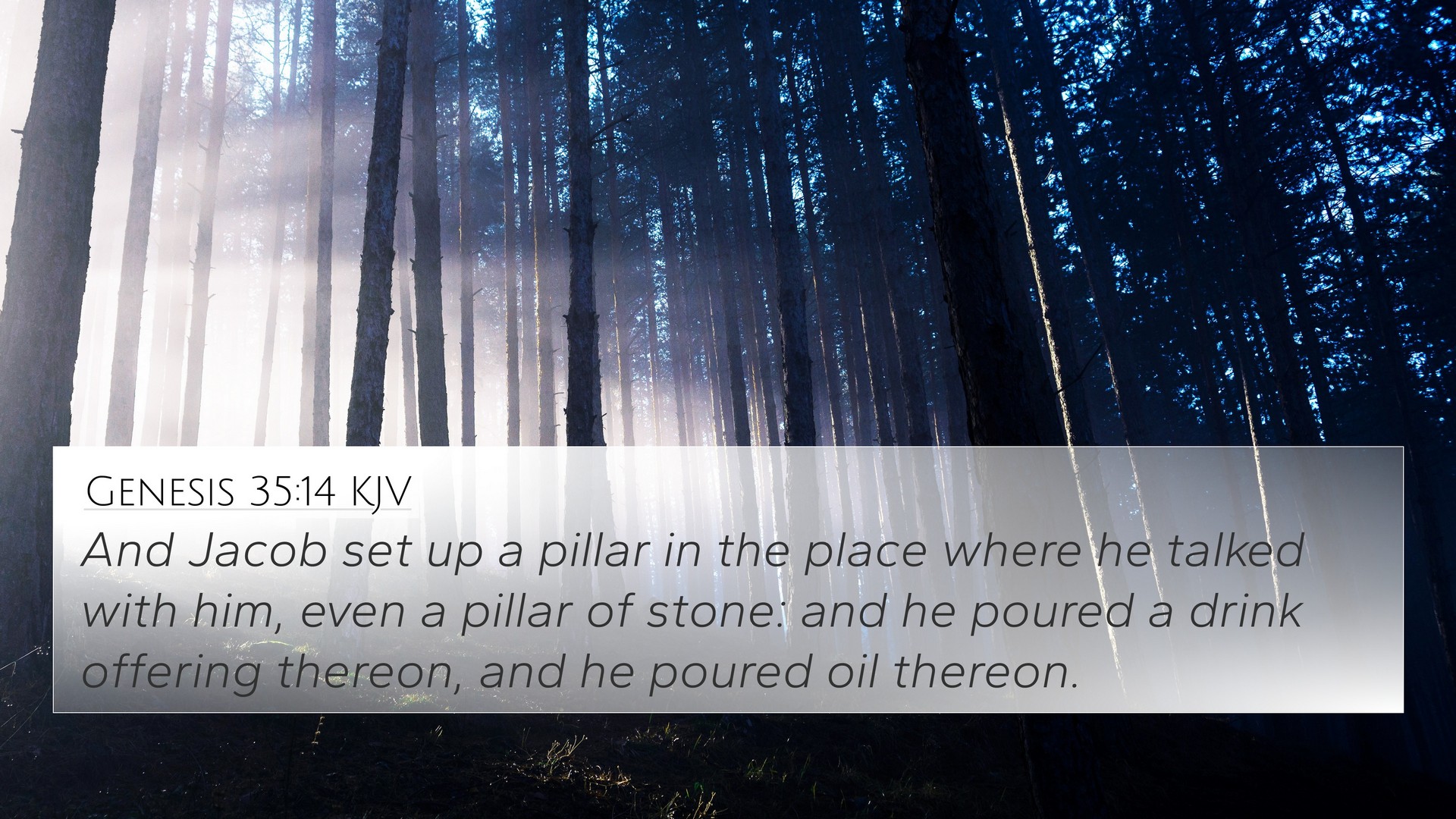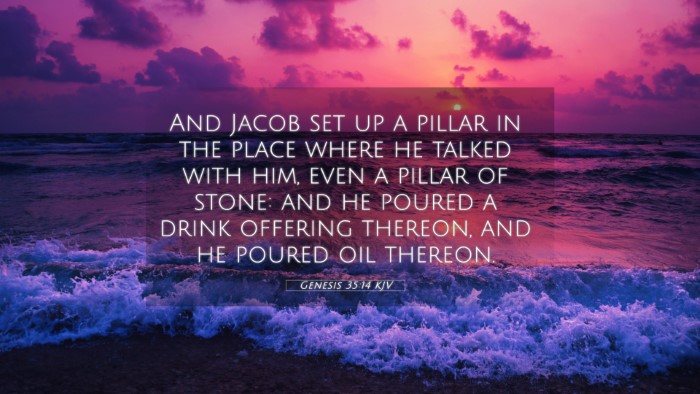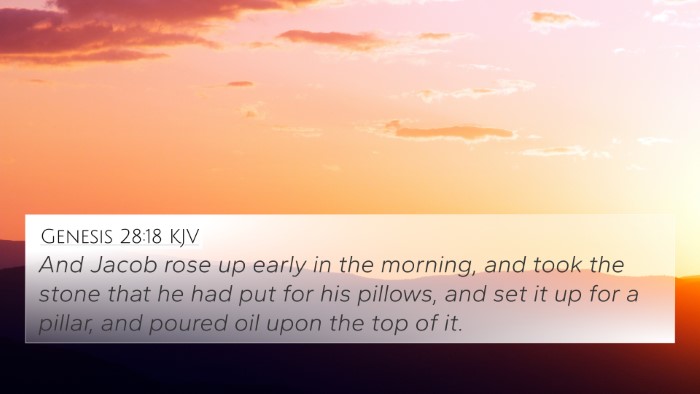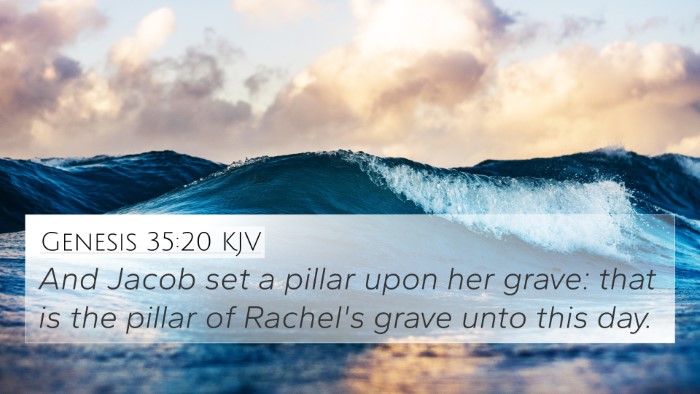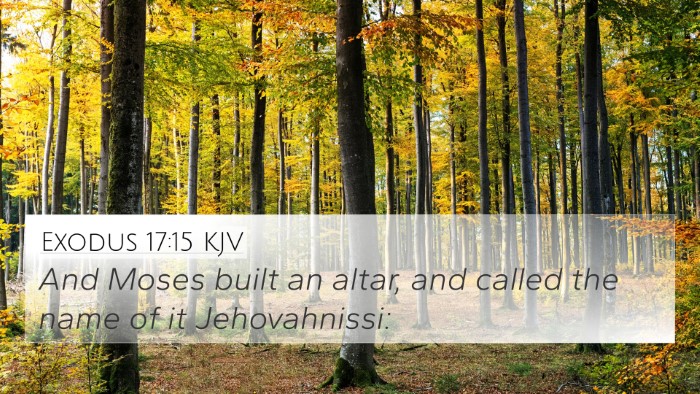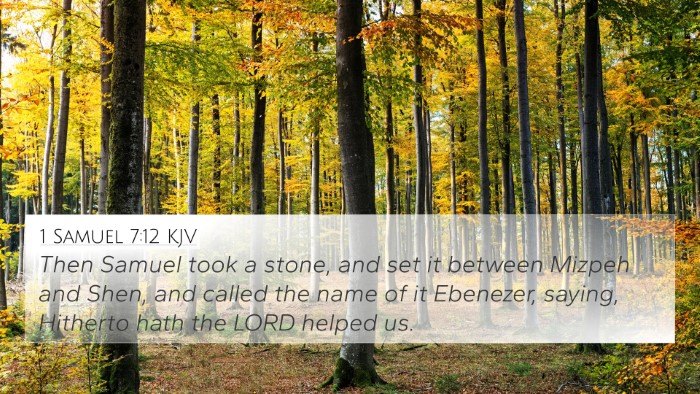Understanding Genesis 35:14
Genesis 35:14 states: "And Jacob set up a pillar in the place where he talked with him, a pillar of stone: and he poured a drink offering thereon, and he poured oil thereon."
Meaning and Interpretation
This verse signifies a profound moment in Jacob's life where he acknowledges God's presence and guidance. According to Matthew Henry, this act of setting up a pillar demonstrates a commitment to memorialize the divine communication he received. It serves as a reminder of God's covenant with him and his descendants.
Albert Barnes points out that the choice of materials—a stone pillar—symbolizes permanence and the seriousness of Jacob's response to God's blessings. The addition of a drink offering and oil represents acts of worship, conveying gratitude and reverence towards God. This aligns with later biblical practices indicated in Exodus and Leviticus related to offerings.
Adam Clarke expands on the ritualistic significance of the drink offering, emphasizing that these practices were established as acts of devotion, showing Jacob's deep spiritual engagement and commitment to God. The act of anointing the stone with oil represents setting apart the place for holy remembrance.
Cross-References and Connections
Genesis 35:14 can be linked with several other scripture passages to provide deeper insights into its meaning. Here are some key cross-references:
- Genesis 28:18-22 - Jacob’s earlier wish to dedicate a stone as a pillar after his first encounter with God at Bethel.
- Exodus 29:40-41 - The instructions for daily offerings which reflect the ritual significance of the drink offering.
- 1 Samuel 7:12 - Samuel erecting a stone after victory, known as Ebenezer, similarly symbolizes divine help.
- Ezekiel 43:18-27 - Outlines the offerings and anointing in the context of God's presence among His people.
- Matthew 26:6-13 - Anointing Jesus with oil highlights the continued importance of oil in acts of devotion.
- Hebrews 13:15 - The idea of offering a sacrifice of praise parallels the worship Jacob demonstrates.
- Acts 10:4 - Cornelius’ offerings echo the importance of dedicating acts to God in seeking His favor.
Thematic Connections
Genesis 35:14 situates itself within larger biblical themes such as:
- Pillar of remembrance: Recognizing key spiritual moments (Joshua 4:20-24).
- Worship and offerings: Illustrating the importance of expressing gratitude through tangible acts (Psalm 51:17).
- God's covenant: Continuity of God's promises from Abraham to Jacob (Romans 9:4).
- Divine guidance: Seeking and responding to God's direction (Proverbs 3:5-6).
Exploring Deeper Cross-Referencing
When studying Genesis 35:14, one may consider how to use tools for Bible cross-referencing effectively:
- Bible Concordance: Aid in finding words and related verses.
- Comparative Bible Verse Analysis: Provides perspective on similar themes across different books.
- Bible Cross-Reference Guide: Helps navigate relationships between scriptures.
- Cross-reference Bible study methods: Effective in determining faith and thematic connections.
Engaging in cross-referencing can deepen understanding and reveal the interconnectedness of Biblical texts. One might explore questions such as "What verses are related to Genesis 35:14?" and "How do Genesis 35:14 and Exodus 29:40 connect?"
Conclusion
In reflecting upon Genesis 35:14, believers can appreciate the rich layers of meaning found in the act of worship that Jacob performs. The establishment of the stone pillar exemplifies an intentional act of remembrance of God's promise, which is a recurrent theme throughout the Bible, seen in the connections formed between both Old and New Testament texts. By utilizing tools for cross-referencing, one can explore and deepen their understanding of scriptural teachings and discover new insights into their faith journey.
